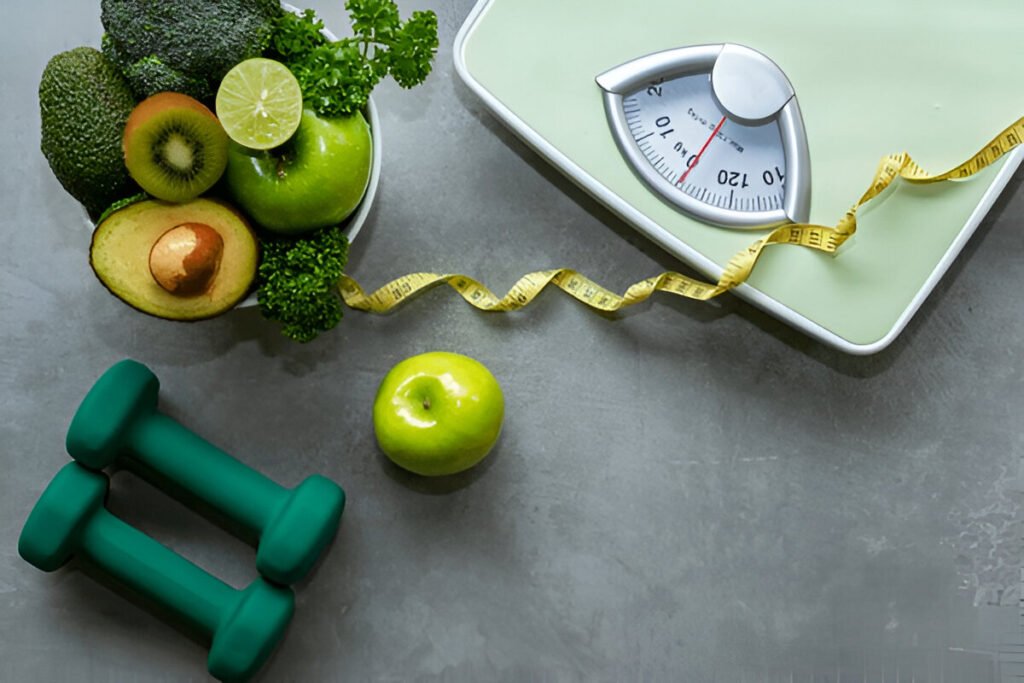Losing fat while gaining muscle is a common fitness goal, and understanding body composition is essential for achieving it. Body composition refers to the ratio of fat to lean mass in the body, which plays a significant role in overall health and physical performance. Optimizing this balance can improve aesthetics, enhance strength, and boost metabolic health, making it a vital focus for anyone looking to transform their physique.
Despite popular belief, it’s possible to lose fat and gain muscle simultaneously, challenging the misconception that these goals are mutually exclusive. This myth oversimplifies complex metabolic processes that involve muscle protein synthesis and fat oxidation. Addressing these misunderstandings is crucial for setting realistic expectations and motivating individuals on their fitness journeys.
This article will outline effective strategies for achieving the dual objectives of fat loss and muscle gain. By examining key areas such as nutrition, exercise regimens, recovery techniques, and lifestyle adjustments, readers will gain a comprehensive understanding of how to navigate their fitness goals. These insights will empower individuals to take actionable steps towards improving their body composition and overall health.
Understanding the Basics
Understanding body composition is crucial for anyone looking to lose fat while gaining muscle. It encompasses various metrics, including body fat percentage and lean muscle mass, serving as indicators of overall health. A balanced body composition and improved physical appearance, enhance metabolic function and reduces the risk of chronic diseases, making it a key focus in fitness and health.
Muscle and fat play distinct roles in the body that significantly impact metabolism and health. Since muscle tissue has a high metabolic activity, it contributes to total energy expenditure by burning calories even while at rest. In contrast, excess body fat can lead to health complications, such as cardiovascular disease and diabetes. Recognizing the functions of these tissues helps individuals develop effective strategies for fat loss and muscle gain, ultimately leading to better health outcomes.
The interrelationship between fat loss and muscle gain is rooted in physiological processes such as lipolysis, which is the breakdown of fat, and muscle protein synthesis, which builds and repairs muscle tissue. These processes are influenced by dietary choices and physical activity levels. Understanding these mechanisms allows individuals to optimize their training and nutrition strategies, creating a more effective approach to achieving their fitness goals.

Nutrition Strategies
Implementing effective nutrition strategies is essential for losing fat while gaining muscle, with caloric balance being a fundamental concept. To lose fat, a caloric deficit is required, whereas muscle gain typically demands a caloric surplus. However, achieving both goals simultaneously is possible by maintaining a slight caloric deficit while increasing protein intake. This approach allows for muscle growth alongside fat loss. Additionally, balancing macronutrients—proteins, fats, and carbohydrates—tailors energy needs and supports recovery, ensuring that the body functions optimally during this dual process.
Consuming protein is especially important for those who want to lose fat and gain muscle. Research indicates that consuming between 1.6 to 2.2 grams of protein per kilogram of body weight can effectively promote muscle gain and facilitate fat loss. Incorporating high-quality protein sources, such as lean meats, dairy products, legumes, and plant-based proteins, provides essential amino acids necessary for muscle repair and growth. This focused protein strategy not only supports muscle development but also aids in maintaining satiety, which can help manage overall caloric intake.
Healthy fats and carbohydrates also play significant roles in a balanced diet for fat loss and muscle gain. Healthy fats contribute to hormonal balance and enhance nutrient absorption which are critical for muscle growth and recovery. Meanwhile, complex carbohydrates provide the sustained energy needed for effective workouts, and fibrous vegetables can improve satiety and overall nutrition. By carefully selecting fats and carbohydrates, individuals can optimize their diets to support their fitness goals while ensuring they meet their nutritional needs.
Exercise Regimen
An effective exercise regimen is vital for simultaneously losing fat and gaining muscle, with strength training as a cornerstone of this approach. Various types of strength training—such as free weights, resistance bands, and bodyweight exercises—offer diverse stimuli that promote hypertrophy (muscle growth) and strength development. To maximize results, it’s essential to incorporate progressive overload, which involves gradually increasing the weight or intensity of exercises over time. This principle ensures continuous muscle adaptation and growth, making it a critical component of any successful training program.
Cardiovascular exercise also plays an important role in a balanced fitness routine aimed at fat loss and muscle gain. Engaging in both steady-state cardio (like jogging or cycling) and interval training can significantly enhance caloric expenditure while helping to maintain muscle mass during a caloric deficit. Striking the right balance between cardio and strength training is crucial, as excessive cardio can hinder muscle recovery and growth. A well-structured regimen will incorporate both elements to optimize results, ensuring that the body is effectively burning fat while still building muscle.
High-Intensity Interval Training (HIIT) offers additional benefits for those pursuing fat loss and muscle gain. HIIT workouts, which consist of short, intense bursts of exercise followed by brief rest periods, can significantly boost metabolism and enhance fat oxidation while preserving muscle mass. This efficiency makes HIIT a valuable tool for anyone looking to maximize their training in a limited time. Incorporating HIIT into a fitness routine can involve exercises such as sprints or burpees, providing a versatile and effective method to achieve dual fitness goals.
Recovery and Lifestyle Factors
Recovery and lifestyle factors play a significant role in successfully losing fat while gaining muscle, with quality sleep being paramount. Adequate sleep—ideally between 7 to 9 hours per night—facilitates muscle recovery and supports hormonal regulation, both of which are critical for optimizing overall health. Poor sleep can hinder recovery processes, leading to decreased performance and potential setbacks in achieving fitness goals. Prioritizing restful sleep is essential for ensuring the body can repair and grow muscle effectively while promoting fat loss.
Stress management is another vital component of a balanced approach to fitness. Chronic stress can elevate cortisol levels, a hormone that may negatively impact fat loss and muscle gain. High cortisol levels can lead to increased appetite and cravings, making it challenging to maintain a caloric deficit. Incorporating stress-reduction techniques, such as mindfulness, meditation, or yoga, can help mitigate these effects, promoting a healthier body composition and overall well-being. By managing stress, individuals can create a more conducive environment for achieving their fitness goals.
Staying hydrated is equally important for optimizing metabolic processes and enhancing recovery. Proper hydration supports nutrient transport, regulates body temperature, and aids in the elimination of waste products from the body. Adequate fluid intake is especially crucial during and after workouts to maintain performance and recovery. Aim to drink enough water throughout the day, and consider hydration strategies around exercise sessions to ensure the body remains well-hydrated, further supporting fat loss and muscle gain efforts.
Tracking Progress
Tracking progress is essential for anyone looking to lose fat while gaining muscle, and setting realistic goals is the first step in this process. Utilizing the SMART criteria—Specific, Measurable, Achievable, Relevant, and Time-bound—ensures that goals are clear and motivational. This approach helps individuals create a structured plan that fosters accountability and encourages consistent effort, making it easier to stay focused on their fitness journey.
Measuring body composition is crucial for accurately assessing progress over time. Various tools and techniques, such as body composition scales, skinfold callipers, and DEXA scans, can provide valuable insights into changes in fat and lean mass. By regularly monitoring these metrics, individuals can gain a clearer understanding of their body composition, enabling them to make informed decisions regarding their training and nutrition strategies.
To maximize results, it’s important to regularly review progress and adjust plans based on the outcomes. Analyzing data from body composition measurements and personal experiences allows for informed tweaks to diet and exercise regimens, ensuring continued advancement toward goals. This iterative process helps maintain motivation and commitment, making it easier to navigate challenges and stay on track in the pursuit of fat loss and muscle gain.

Common Mistakes to Avoid
Avoiding common mistakes is crucial for successfully losing fat while gaining muscle. One significant pitfall is overtraining, which occurs when individuals push themselves too hard without allowing for adequate recovery. This may eventually impede progress and result in burnout and an elevated risk of injury. Prioritizing rest and incorporating recovery strategies, such as active recovery days and sufficient sleep, are essential for long-term success and performance improvement.
Another frequent mistake is neglecting nutrition. Even with a rigorous training regimen, poor dietary choices can stall progress and prevent individuals from reaching their fitness goals. It’s important to focus on nutrient-dense foods that provide the necessary vitamins, minerals, and macronutrients to fuel workouts and support recovery. A well-rounded diet enhances performance and optimizes body composition changes, making it an integral part of any fitness plan.
Unrealistic expectations can also impede motivation and growth. Individuals often aim for rapid results, leading to frustration when changes take longer than anticipated. Understanding that body composition changes require time and consistent effort is vital for maintaining motivation. By setting achievable, incremental goals and celebrating small victories along the way, individuals can foster a more positive and sustainable approach to their fitness journey.
Conclusion
Achieving simultaneous fat loss and muscle gain is attainable through a combination of strategic nutrition, effective exercise regimens, and proper recovery practices. By understanding the principles of caloric balance, prioritizing protein intake, and incorporating both strength training and cardiovascular exercises, individuals can create a comprehensive approach that supports their fitness goals.
It’s crucial to emphasize the importance of sustainability and long-term commitment in any fitness journey. Quick fixes and fad diets may yield temporary results, but lasting change comes from consistent effort and healthy lifestyle choices. By focusing on gradual progress, individuals can cultivate habits that promote overall well-being and success.
Now is the time to start your journey toward better body composition and health. Take actionable steps today by setting realistic goals, tracking your progress, and making informed adjustments to your diet and exercise plan. Remember, consistency and patience are key; every small step taken today brings you closer to achieving your fitness aspirations.





